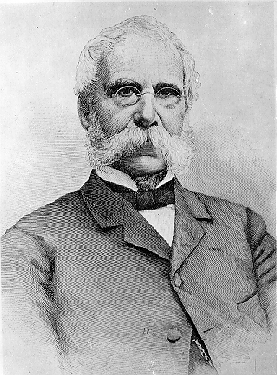Wearing a fur coat, Emma Ward Bucknell sat, rowing, in a lifeboat surrounded by ice as she watched the RMS Titanic sink after ramming an iceberg in the North Atlantic one night in April 1912.
“We were about a mile from the Titanic when she sank,” said Bucknell, the widow of the Philadelphia tycoon for whom Bucknell University is named.
Its lights suddenly went out, and “we heard faint cries as the big ship raised to the angle to slide into the sea, and we heard the roar of the air as she finally plunged to the bottom,” she said.
The liner sank at about 2:20 a.m. on April 15. That was about 90 minutes after Lifeboat No. 8 left it with Bucknell, 30 other passengers and four seamen aboard.

Three hours earlier, Bucknell, 59, had been asleep in her first-class cabin on the starboard (right) side. “My cabin was … at the front of the ship,” Bucknell said. Shortly before midnight on April 14, “I was awakened by the crash as the vessel struck the iceberg.”
She dressed quickly and hurried into the corridor. “I found pieces of ice on the floor. They had been forced through a broken port hole when the iceberg was hit,” Bucknell said.
An hour after that, the Titanic started to sink and passengers were boarding the ship’s 20 lifeboats.
In early 1912, Bucknell went to Europe to visit a daughter living in Italy. She returned on the Titanic, one of 1,300 passengers on its maiden voyage. With a crew of 900, it left Southampton, England, on April 10 and crossed the English Channel to Cherbourg, France, where Bucknell boarded.
Leaving France, it sailed to Ireland, stopped briefly at the Irish port of Queenstown, and headed across the ocean, bound for New York.
The ship foundered four days later. Bucknell was one of 705 people — most of them passengers — who were rescued, but 1,500 others — crew members as well as passengers — died.
Safely back in Pennsylvania days later, Bucknell found herself front-page news. She had survived the Titanic disaster, and reporters clamored for interviews. Reporters for the Philadelphia Inquirer and the Chester Times quoted Bucknell at length as she described her experiences.
She told how she and 30 other women — including her friend Margaret “Unsinkable Molly” Brown — spent a long, frigid night in a lifeboat, and felt relief when the sunrise revealed a ship steaming to the rescue.
Bucknell told how the crash terrified the passengers.
“It was horrible and sounded like a mixture of thunder and explosions,” she told the Chester Times. “In a moment there was a roaring sound and I knew that something serious was the matter. The corridors filled rapidly with frightened passengers and then the stewards and officers came, reassuring us with the announcement that everything was all right and that ‘only a small hole had been stove (made) in the bow.’”
Bucknell rejected their reassurances: “I said to my maid, ‘Get dressed at once.’ We hurried into our clothes and I took the precaution to get fully dressed. So did my maid. I even thought to wrap myself in my warm fur coat, for even then I felt sure we would have to take to the lifeboats.”
The woman’s concern was well justified. “My fears were realized a few minutes later when a steward walked briskly down the corridor, calling to the passengers who had retired again to hurry into their clothes and get on deck at once,” she said. “I could see by this man’s drawn and haggard face that something dreadful had happened.”
“There was no excitement on the deck among the passengers,” she told The Inquirer. “They were in groups talking to one another,” said Bucknell. “I saw Colonel and Mrs. John Jacob Astor … and a number of others talking about the collision.”
Emma Bucknell
At around 12:30, the crew began placing women passengers in the lifeboats. “I was put in the second lifeboat from the bow,” Bucknell said. Her maid, Albina Bassani, went with her.
The officer in charge of loading these boats sought to reassure the women. “It is only a matter of precaution … and there is really no danger,” Bucknell quoted him as saying.
When the lifeboat was lowered into the ocean, the women learned the seamen didn’t know how to use the boat’s four oars. So the women taught them. “I have known how to row for a great many years … and I slipped into the seat beside a man and showed him how to work the oar,” Bucknell said.
She said that while some women “were fully dressed, others wore only their nightgowns and kimonos. One of the women who helped row “was dressed in this fashion, and her hair was streaming down her back and shoulders all the time we were in the little boat.”
“We rowed all night. …,” she said, adding, “The air was freezing cold.”
When the sun came up, “off about 10 miles we could make out the (RMS) Carpathia,” she said.
It took a while for her lifeboat to reach the liner, and “on all sides of us, of course, there was ice,” she said.
Other lifeboats also made their way to the Carpathia. “The passengers turned out to help us. The sailors, the stewards, the stewardesses and everybody did nothing but attend to the wants to those from the Titanic,” Bucknell said.
Although it wasn’t possible to determine whether Emma Bucknell ever visited the Lewisburg campus, documents obtained from the university show that her husband, Philadelphia financier William R. Bucknell, served numerous terms on its board. “In 1889, Bucknell attended his last commencement; at the time of his death in 1890, he had given Bucknell University more than $268,000,” according to the university website.
Editor’s note: Sources for this article include newspapers.com and documents from the Bucknell University archives.
